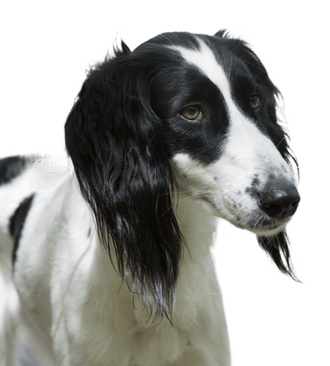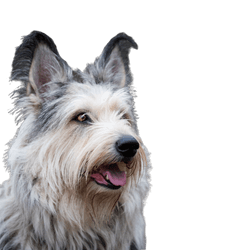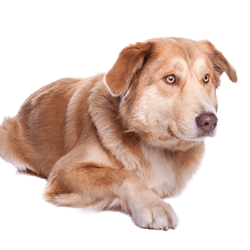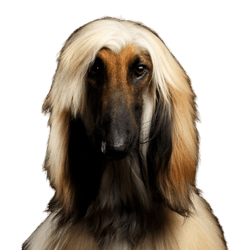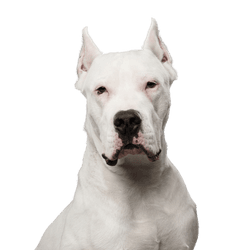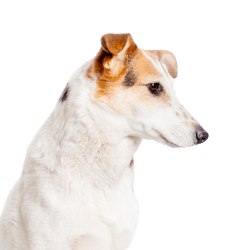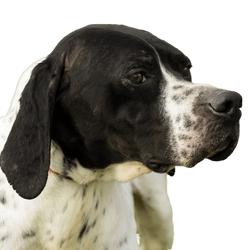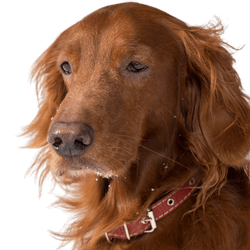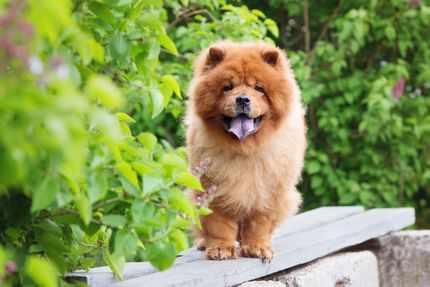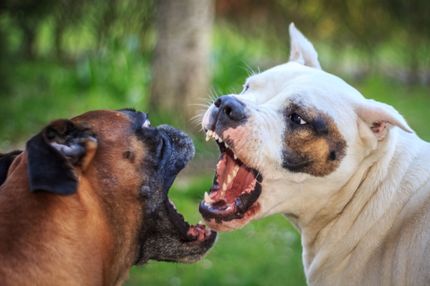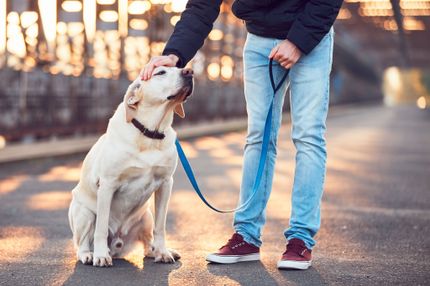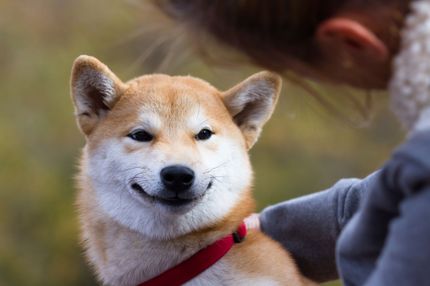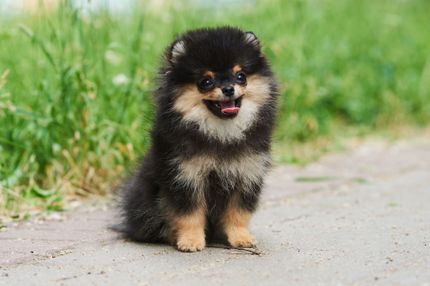Facts & Origin
Origin and development
The Taigan is one of the ancient Central Asian sighthounds and developed over centuries in the extreme mountainous landscape of Kyrgyzstan. It is particularly widespread in the region of the Tien Shan Mountains, where it proved to be an exceptional hunter.
Suitability and use
Its physique and hardy coat make it ideal for rugged terrain and altitudes of 2,000 to 4,000 meters above sea level.
Since the 1980s, the breed has also become widespread in Russia, where it is successfully used for hunting hares and foxes. In densely wooded areas, it is also used to hunt roe deer.
Different types within the breed
In its homeland, there are two basic types of Taigan: the valley type and the mountain type.
- Mountain type: more robust, stronger and has a particularly dense, long coat - usually black in coloration
- Valley type: somewhat lighter in build, with less dense but equally arranged fur
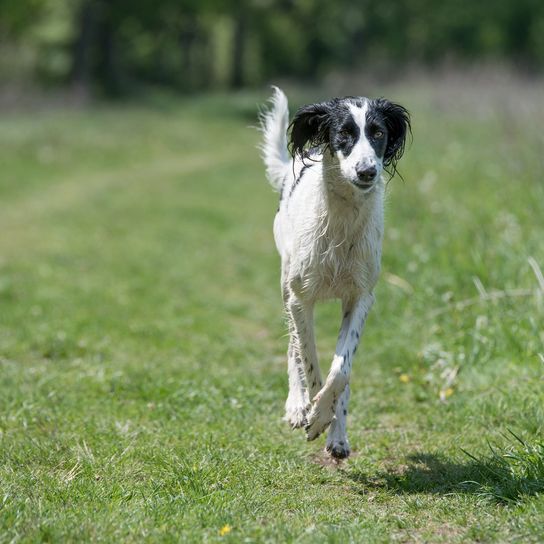
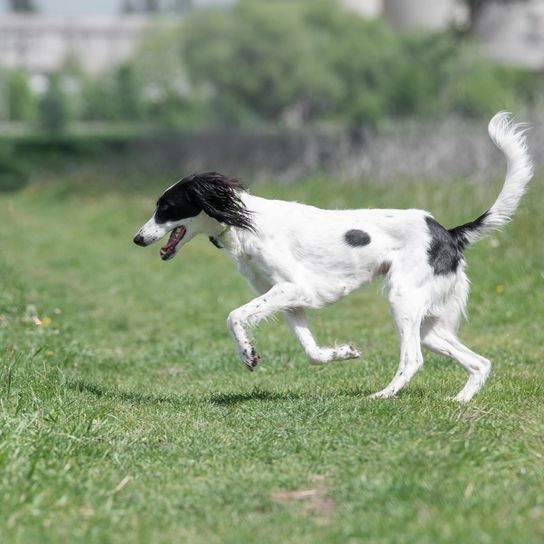
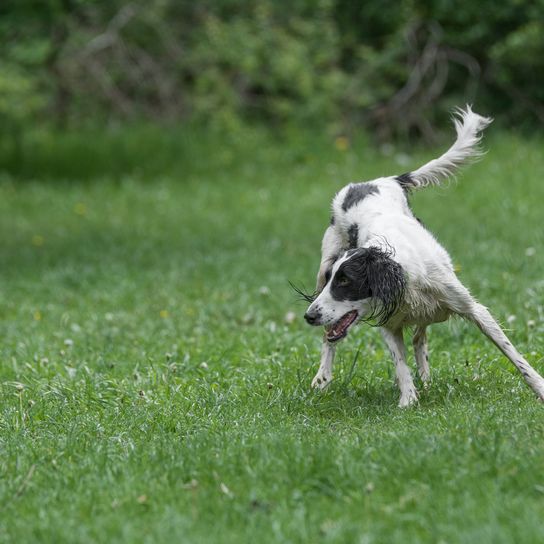

| Alternate Name | Kirghiz Barzoi, Tajgan |
| Origin | - |
| Life expectancy | 12 - 15 years |
| Care requirements | low-maintenance |
| Activity level | average to high |
| FCI group | not recognised |
| AKC group | not recognised |
| KC group | not recognised |
Attitude, character and temperament of the breed
Use as a hunting dog
Traditionally, the Taigan is used to hunt ibex, roe deer, foxes, small wild dogs (korsaks), badgers and even wolves. Its ability to hunt in combination with golden eagles - a centuries-old Kyrgyz hunting technique - is particularly impressive.
Its sensitivity makes it less tolerant of rough treatment. When hunting, however, he shows a completely different side - as soon as he sees game, he becomes highly concentrated, energetic and determined. He is a courageous and persistent hunter who makes independent decisions without losing communication with his hunter.
Character and behavior of the Taigan
The Taigan is characterized by a balanced and independent nature. It is calm and composed in most situations, almost placid, but shows a strong bond with its owner, to whom it is loyal and friendly. With strangers, he usually remains aloof, but without aggression.
The Taigan is intelligent, adaptable and has a keen sense of observation. It reacts quickly to changes in its environment and is able to orient itself well in unfamiliar situations.
It can be kept both indoors and outdoors, but needs plenty of exercise and exercise, ideally off the lead in safe areas away from roads. His coat care is uncomplicated, as his long, thick hair only needs to be brushed occasionally.
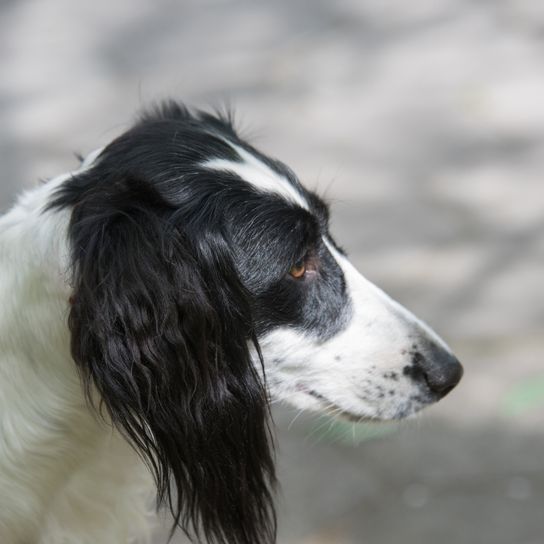

Health and breeding information
Coat care and hygiene
The Taigan has a dense, long and soft coat that develops a warming undercoat, especially in winter. It therefore requires regular grooming to prevent matting and remove dirt. Thorough brushing at least once or twice a week is recommended. Dirt or snow can collect on the ears, legs and between the toes in particular, which is why these areas should be given special attention.
As the Taigan has little odor of its own, it rarely needs baths. If it is heavily soiled, a mild dog shampoo should be used so as not to destroy the coat's natural protective layer.
Care of ears, eyes and claws
Like many greyhounds, the Taigan has drooping ears that are susceptible to soiling. They should therefore be checked and cleaned regularly to prevent infections. The eyes should also be checked for irritation or foreign bodies, especially after hunting or walks in dense terrain.
The claws often wear out naturally in active dogs, but with little exercise or soft ground, they should be trimmed regularly to avoid misalignment or injury.


Appearance and coat structure
The Taigan is a Central Asian sighthound characterized by its long, dense and soft coat. Particularly in winter, it develops a warming undercoat that makes it ideally suited to the harsh climate of its homeland. The coat is short on some parts of the body, particularly on the muzzle, forehead, front of the front legs, parts of the hind legs and on the back and flanks. At the same time, longer, wavy hair grows on other parts of the body. The coat is particularly pronounced on the back of the head, on the neck, on the shoulders and on the back of the legs, where it can reach lengths of over 7 cm. Long, soft hair of 5-8 cm or more also develops on the ears. Between the toes, a dense coat protects the paws from rough terrain, while the underside of the tail is not covered with long fur. This special coat distribution is a characteristic feature of the breed.
Color spectrum
The Taigan comes in different color variations, including black in various shades, black with white markings (the most common coloring), grey, brown and various shades of yellow. Pure white dogs are also represented. White markingscan sometimes be seen inthe darker areas of the coat.
| Fur length | long |
| Fur | wavy |
| Ear shape | Floppy Ear |
| Tail | lang |
| Anatomy | slim |
| Size ♀ | 60 - 65 cm |
| Weight ♀ | 16 - 22 kg |
| Size ♂ | 65 - 70 cm |
| Weight ♂ | 18 - 25 kg |
| Suitable For | - |



FAQ
-
The Taigan originates from Kyrgyzstan and belongs to the group of Central Asian sighthounds. It has been bred for centuries in the mountainous regions of the Tien Shan Mountains.
-
No, the Taigan is not recognized by the FCI, but is considered a national breed in Kyrgyzstan and is also bred in Russia.
-
The Taigan was used as a hunting and companion dog. It was used specifically for hunting wild animals such as hares, foxes, wolves, roe deer and even ibex, often in combination with hunting birds such as golden eagles.
-
Yes, the Taigan can be a loyal and loving companion. However, he is very independent and needs consistent but loving training. He also needs plenty of exercise and mental activity.
-
As a sighthound, the Taigan is a very active dog and needs plenty of exercise every day. Long walks are not enough - free running in safe terrain or dog sports such as lure coursing are ideal to keep him physically and mentally active.
-
The Taigan is intelligent, but also very independent. It needs consistent training with positive reinforcement. Hunting instincts are very pronounced, so work should be done early on to make him recallable.
-
Basically yes, but only if he gets enough exercise and activity.
